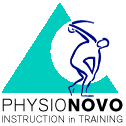Correlation shoulder joint function - neck pain
Recent research shows how inadequate shoulder joint function can lead to neck pain
Ghamkhar et al. (2020) investigated the correlation between muscle strength in painful (neck) and pain-free (scapulothoracic, shoulder, trunk and hip) areas in 122 patients with chronic neck pain within the framework of the regional interdependence theory.
Logistic and linear regression analyses showed that the shoulder strength component is both a significant predictor of the occurrence of neck pain and has a significant effect on the pain intensity score. Shoulder muscle strength is inversely related to the probability of pain occurrence and pain intensity.
Falla et al. (2004, 2014) found higher activity of accessory neck muscles (anterior scalenii, sternocleidomastoid, trapezius descendens) during a repetitive arm task in patients with neck pain compared to people in an asymptomatic control group. This higher activity of the accessory (neck-shoulder) muscles during functional arm activity may indicate a compensatory mechanism for reduced activity of shouldermuscles. Arthromyogenic (glenohumeral) inhibition mechanisms could underlie this (PG).






